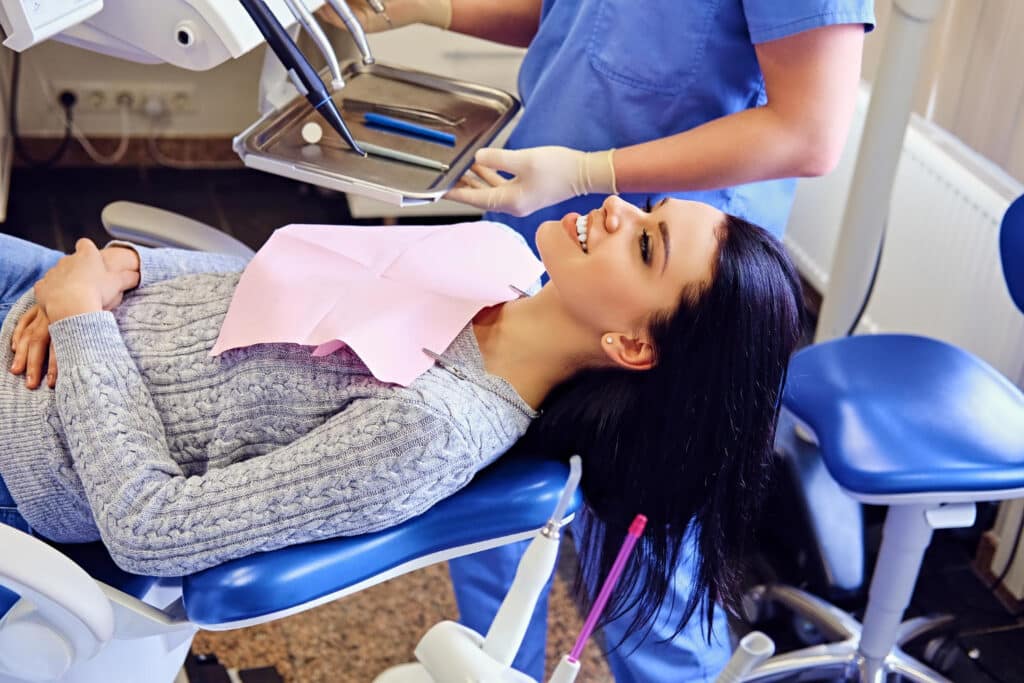For many people, a visit to the dentist can evoke feelings of anxiety and fear. Dental anxiety, if severe, may discourage individuals from pursuing necessary dental care, leading to potential oral health issues down the road. This is where sedation dentistry can be of immense help, alleviating anxiety, and ensuring a comfortable and stress-free experience during dental procedures.
At Pickering Square Dental, we understand the concerns associated with dental anxiety and aim to provide a calm, gentle atmosphere for our patients. We offer safe sedation dentistry options that enable patients to undergo dental work in a relaxed state while ensuring the highest standard of care. In this blog post, we will explore the various types of sedation dentistry available, how it helps in creating a comfortable dental environment, and the numerous benefits it offers to patients experiencing anxiety or fear in relation to dental procedures.
Continuing your journey toward better oral health shouldn’t come with a side helping of anxiety or discomfort. Sedation dentistry can be tailored to suit your individual needs, helping you maintain your dental well-being and ensure that your time at the dental office is both pleasant and productive. Keep reading to learn more about sedation dentistry and how our team of dental professionals at Pickering Square Dental can help make your dental visits a relaxed and stress-free experience.
1: Types of Sedation Dentistry
Sedation dentistry offers various options to accommodate different levels of anxiety and specific dental procedures. Here is an overview of the most common types of sedation dentistry:
1. Nitrous Oxide (Laughing Gas): Nitrous oxide, also known as laughing gas, is a mild sedative that is inhaled through a small mask placed over your nose. It induces a state of relaxation, and its effects can be monitored and adjusted throughout the procedure. Once the gas is discontinued, its effects wear off quickly, allowing patients to return to their daily activities soon after the appointment.
2. Oral Sedation: Oral sedation involves the administration of a prescribed sedative pill that is ingested before your dental appointment. The medication helps to reduce anxiety, and the level of sedation can be adjusted depending on the desired effect. Patients receiving oral sedation will need a responsible adult to drive them to and from the appointment.
3. Intravenous (IV) Sedation: IV sedation is a moderate to deep sedation technique wherein the sedative is administered directly into the bloodstream through a vein, allowing for an immediate and controlled effect. As this method results in a deep state of relaxation, patients may not remember details of the procedure, and a responsible adult will be required to accompany them home.
4. General Anesthesia: In cases where severe anxiety is present or when complex dental procedures are required, general anesthesia may be used. Administered by a qualified anesthesiologist, this type of sedation involves the use of medication to induce a state of complete unconsciousness. Patients will require some time to recover, and a responsible adult must accompany them home.
Your dentist will evaluate your anxiety level, medical history, and procedure requirements to determine the most appropriate sedation option.
2: How Sedation Dentistry Works
Sedation dentistry encompasses a variety of techniques that help create a comfortable and anxiety-free environment during dental procedures. Here’s a general overview of how sedation dentistry works:
1. Pre-Procedure Assessment: Your dentist will review your medical history and discuss any concerns you may have about your dental procedure. Based on this information, an appropriate sedation method will be recommended to ensure your comfort.
2. Sedation Administration: Depending on the chosen method, sedation may be given orally, inhaled through a mask, administered intravenously, or provided through general anesthesia. The goal is to induce a calming and relaxed state that allows you to undergo dental work without distress or discomfort.
3. Monitoring and Adjusting: Throughout the procedure, your dentist or anesthesiologist will monitor your vital signs and ensure that the sedation level is maintained within safe and effective boundaries. If necessary, adjustments to the sedation dosage can be made.
4. Post-Procedure Care: After the dental procedure is completed, your dentist will provide you with post-sedation care instructions specific to the type of sedation used. Depending on the level of sedation, you may need to arrange for a responsible adult to accompany you home.
3: Benefits of Sedation Dentistry
Sedation dentistry offers a range of advantages to patients experiencing anxiety or fear associated with dental procedures:
1. Decreased Anxiety and Discomfort: Sedation dentistry helps to reduce anxiety and create a comfortable environment during dental procedures, allowing patients to undergo necessary dental work without apprehension or distress.
2. Enhanced Patient Cooperation: Patients with heightened anxiety or issues such as a sensitive gag reflex or difficulty sitting still can benefit from sedation dentistry, as it helps to improve patient cooperation during procedures.
3. Faster Treatment: Sedation dentistry can enable dentists to efficiently complete dental procedures in fewer appointments, as patients are more relaxed and cooperative.
4. Memory Blackout: With certain sedation methods, patients may not remember the details of the procedure, which can be desirable for those experiencing dental anxiety or fear.
4: Preparing for Sedation Dentistry
To ensure a smooth and successful sedation experience, follow these preparation tips:
1. Discuss Your Medical History and Medications: Inform your dentist of your complete medical history, including any medications or supplements you are taking, as these factors could influence the efficacy or safety of sedation.
2. Follow Pre-Procedure Instructions: Depending on the type of sedation used, your dentist may provide specific pre-procedure instructions, such as fasting or temporarily ceasing certain medications.
3. Arrange for a Responsible Adult Companion: For more potent sedation methods or general anesthesia, enlist a responsible adult to drive you to and from your appointment and stay with you as you recover.
Conclusion
Sedation dentistry in Pickering plays a vital role in providing a comfortable and anxiety-free dental experience for patients who fear dental procedures. By understanding the various sedation options and how they work, patients can make informed decisions and receive the dental care they need without fear or discomfort.
At Pickering Square Dental, our compassionate team of dental professionals is dedicated to delivering personalized, comfortable care, including safe and effective sedation dentistry options tailored to your specific needs. If you’re considering sedation dentistry to help with dental anxiety, contact our office to schedule a consultation and discover how we can help put your dental fears to rest.



